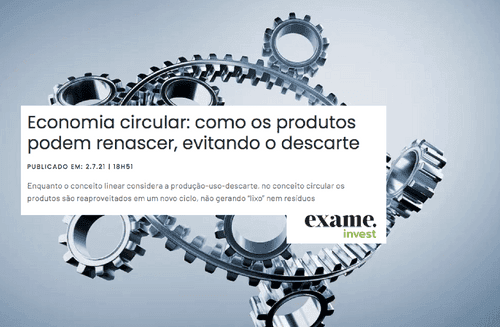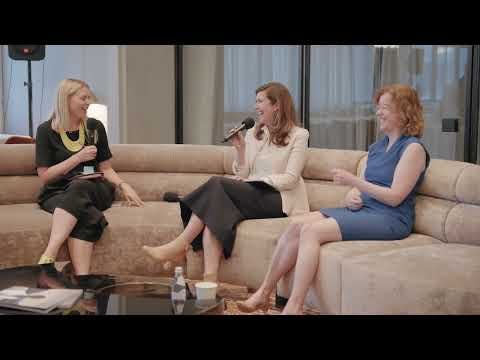
16/07/2021
Circular economy: how products can be reborn
Look how nice it is! This text published on 07/02/2021 Exame Invest portal shows how products can be reused in new cycles, instead of being simply discarded, within a linear logic. Check out:
We believe that two major themes will be on the ESG agenda of companies in the coming years: net zero and the circular economy. Net zero is already a reality for some companies, which have already announced commitments to reduce and neutralize their carbon emissions – although, for the vast majority, it remains to be seen how it will get there. The circular economy is no less urgent issue, but one that still has a lot to grow in Brazil.
According to the Cradle to Cradle Institute, only 8.6% of the global economy is circular and, in order to control the waste issue and reduce the production of new products, this number needs to double. But what exactly is the circular economy?
The circular economy is a solution to the linear economy. While the linear concept considers production-use-disposal, in the circular concept, products are reused in a new cycle, not generating “garbage” or waste.
Recycling, which is a better known concept, falls between the linear and the circular. When recycling a material once or several times, we postpone sending this material for disposal, but this disposal will happen sooner or later.
In the book Cradle to Cradle – Create and Recreate Unlimitedly (McDonough, Wiliam and Braungart, Michael) we learned a lot about this concept. In literal translation, Cradle to Cradle (also known as C2C) means “from cradle to cradle”, trying to express that a product should not “die” but be reborn.
According to the Cradle to Cradle Institute, the transition to renewable energy will solve just 55% of greenhouse gas emissions problems. The other 45% depends on how we produce and use the products.
By reusing and avoiding disposal, we not only solve the problem of waste accumulation (and all its negative consequences for biodiversity and health) but we also avoid or reduce the negative impact of producing a new good.
The big secret to the circularity of a product is in its design. Products need to be intentionally designed to be circular - from circular raw material, through assembly (so that it can be "disassembled" and "reassembled" in the future) and finally use, as the characteristics that make the product circular do not may be lost during use.
Regarding the raw material, the materials and chemicals used in the production process of a circular good are selected to prioritize the protection of the environment and human health, always bearing in mind that these materials will serve as input for the production of a new product.
And, when we think about the cycle of a product, this cycle can be biological (when, at the end of use, the product is decomposed and absorbed by nature, without negative impact) or technical (when it is transformed into a new product, restarting its cycle).
To successfully implement the circular concept, it is necessary to engage different departments of the company (design, purchasing, production, marketing and finance), have the leadership aligned with the project and find suppliers who are willing to enter this long-term journey.
During the month of May, we promoted several events at EXAME related to ESG, and we welcomed Christina Raab, Vice President of Strategy and Development at the Cradle to Cradle Institute, who spoke to us about the concepts of circular economy and Cradle to Cradle certification.
Check it out at: https://invest.exame.com/esg/economia-circular-produto-renascer-descarte

